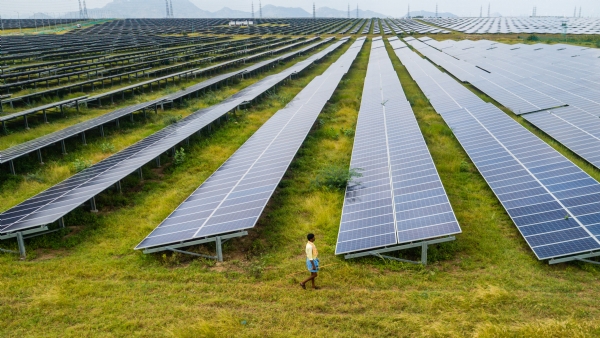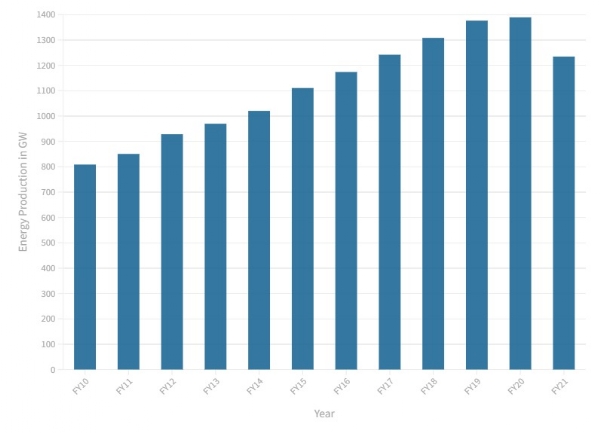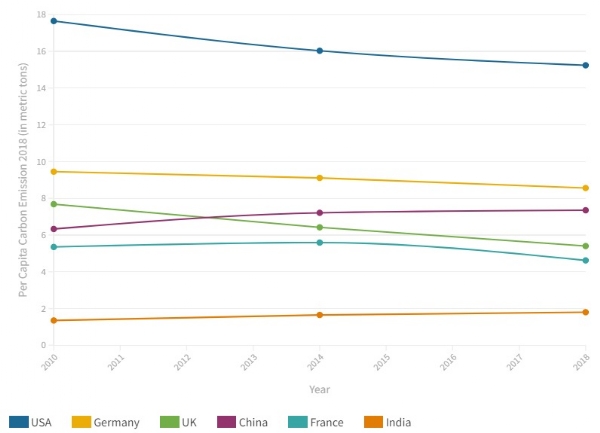India’s Green Energy Story
Since 2014, the Indian government is promoting the use of renewable energy sources. Renewable energy has become an important aspect of energy production. India is the third largest producer and the second largest consumer of electricity.
Total Views |
In modern times, there could be hardly any sector where we don’t require energy. With increasing urbanization, industrialization, and population the energy demand is also increasing day by day. In India power is generated using various fuels, however, given the global warming crisis, India is also shifting from non-renewable to renewable energy sources.

Since 2014, the Indian government is promoting the use of renewable energy sources. Renewable energy has become an important aspect of energy production. India is the third largest producer and the second largest consumer of electricity. The installed capacity of energy production in India is around 401.01GW as of April 30, 2022. As the numbers suggest, it is utterly necessary for India to shift from non-renewable energy sources to renewable energy sources.

India’s power sector is one of the most diversified in the world. There are various sources used for power generation, from conventional sources such as coal, lignite, natural gas, oil, hydro and nuclear power, to viable non-conventional sources such as wind, solar, agricultural, and domestic waste. Electricity demand in the country has increased rapidly and is expected to rise further in the years to come. In order to meet the increasing demand for electricity in the country, massive addition to the installed generating capacity is required.

The energy sector is one of those sectors which acts as an engine for the economy. Not only in terms of contribution to GDP, but energy is required for any industry. The following image shows the production of energy in India. It is to note here, that this is gross energy production. It is from available sources, which include non-renewables like coal, natural gas, etc., and also renewable energy resources like solar energy, wind energy, hydropower, etc.
As the image shows, the energy production of the country is constantly increasing and as one of the largest economies in the world, the demand for energy in India is projected to increase constantly. The major part of this energy comes from coal-based thermal power plants, which along with energy produce large of carbon gases and other harmful pollutants.
Also Read: Aarey Carshed and Environmentalism
In the group, G20 India is at the lowest rank in terms of GDP per capita. India’s GDP per capita is around $2000 and yet India is the only country among the G20 nations that are on track to achieve the targets under the Paris Agreement. Energy while providing substantial support to the economy also contributes to pollution greatly. The industrial revolution changed the western hemisphere not only socially and economically but also environmentally. The effect of industrialization was not thought till the second half of the last century. The image below shows the trend of carbon emissions. All the countries except China and India were once industrialized nations. These countries enjoyed the benefits of industrialization. China and India both are developing counties and they require a large amount of energy to fuel their economy. Despite this situation, it is clear how (at least) India is trying its best to remain low on carbon emissions.
As said above, India is constantly shifting its load from thermal energy to renewable energy sources. As of April 2022, India’s installed renewable energy capacity stood at 158.12 GW, representing 39.43% of the overall installed power capacity. Solar energy is estimated to contribute 55.34 GW, followed by 40.53 GW from wind power, 10.68 GW from biomass, 4.85 GW from small hydropower, and 46.72 GW from hydropower. The renewable energy capacity addition stood at 8.2 GW for the first eight months of FY22 against 3.4 GW for the first eight months of FY21. India was ranked fourth in wind power, fifth in solar power, and fourth in renewable power installed capacity, as of 2020. (IBEF- India Brand Equity Foundation)
Also Read: More than just a Metro Car Shed in Aarey
Since the government of India had committed itself to promoting the use of renewable energy sources, the expenses of the government have increased in the energy sector. There are several policies under which the government is promoting renewable energy sources. Along with solar power plants and windmills, the government is also spending a lot of money on off-grid power production ex. Rooftop solar power plants. One can easily find several policies under which the government is spending. The government of India is also now focusing on reducing transmission losses, so that power can be supplied to every household. As per the US Energy Information Administration India has improved its ranking in terms of solar energy production. In the year 2010, India ranked 16 with around 0.13 billion kilowatts of solar energy production. By 2014, India jumped to 8th rank with 5.81 billion kilowatts of solar production and now in 2020 India improved its position with 61.34 billion kilowatts of production and 4th rank in the world. India also ranked 5 with 315.4 billion kilowatt-hours of renewable energy production.
Also Read: Why a Car Shed is necessary?
The numbers show us a very clear picture, despite having one of the lowest per capita GDPs India is taking promising steps to reduce carbon footprints. India is surely moving upward in the ranking for green energy. The highest oil consumer and producing country is the USA but at the same time, it ranks 2nd in solar energy production. Similar is the case with many ‘industrialized’ nations. Shifting from non-renewable energy sources to renewable sources is a mammoth task in terms of finance. The performance of many middle to low-income countries should be judged on this background.


